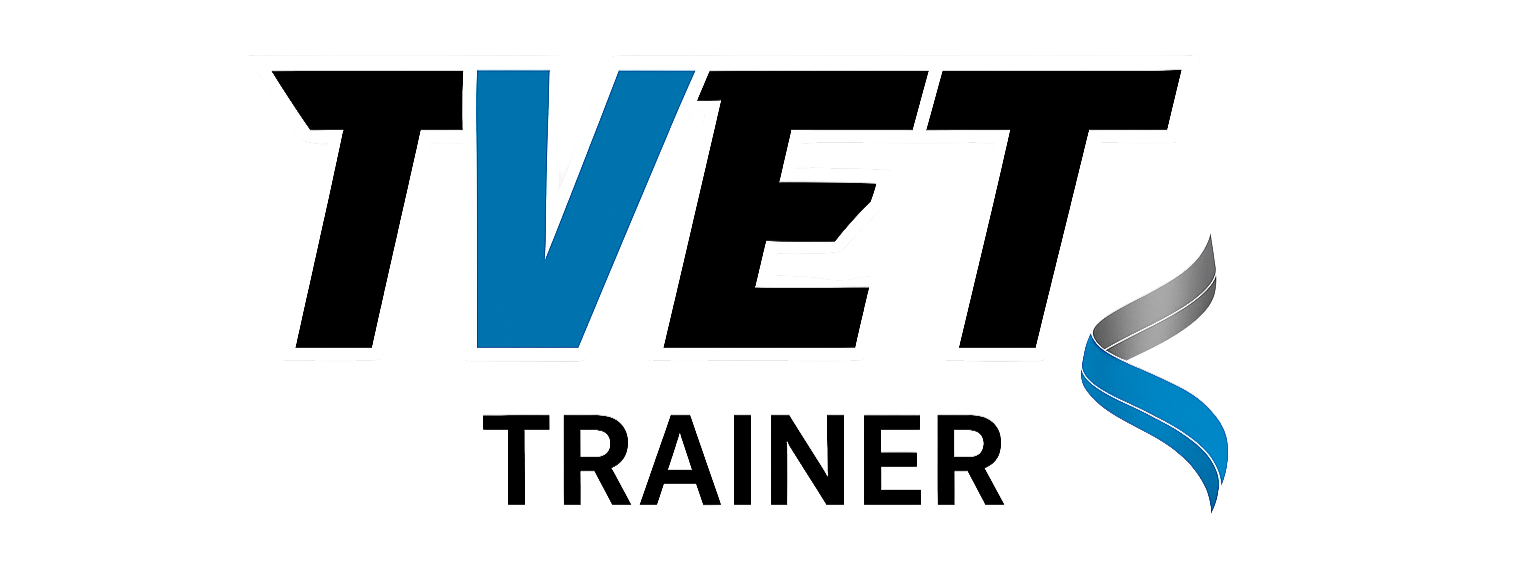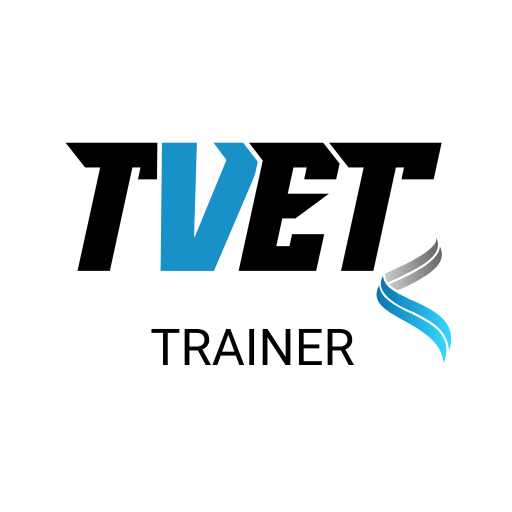In Technical and Vocational Education and Training (TVET), assessments are more than checkpoints of learner progress—they are formal processes that verify competence, inform learning pathways, and uphold the credibility of qualifications. Central to this process is the management of information. When assessment records are created, stored, and reviewed according to defined procedures, they provide a reliable foundation for fair judgements, transparent decision-making, and continuous improvement.
Following procedures for managing assessment information is not simply a bureaucratic requirement; it is an ethical and professional responsibility. Sound record-keeping ensures that learners are treated equitably, assessors are accountable, and awarding bodies can have confidence in the integrity of the results. This article explores why adherence to information-management procedures is critical in TVET, outlining its impact on accuracy, verification, certification, quality assurance, learner feedback, and appeals.
Accurate assessment information provides a clear picture of learner performance and achievement. In the TVET environment, where competence must be demonstrated through observable skills and evidence, assessors rely on precise records to track progress and support fair decisions.
Tracking Progress and Identifying Areas for Improvement
Regular assessment enables trainers and assessors to identify both strengths and development needs. Ongoing evaluations—through practical tasks, written assignments, and observed performance—create a continuous picture of each learner’s progress. Recording these systematically ensures that emerging patterns can be analysed over time, helping trainers to adapt teaching strategies or provide targeted support.
Detailed record-keeping is a core requirement of this process. Using structured systems such as digital grade books or assessment management platforms, assessors can record scores, feedback, and completion statuses in a consistent format. Formative feedback based on these records helps learners understand where they excel and where improvement is required. Individual learning plans, derived from assessment data, allow instructors to personalise support and resources.
Providing Verifiable Evidence of Competence
Effective record-keeping also provides verifiable proof of what a learner has achieved. Portfolios that contain assessment sheets, observation records, and project work offer tangible evidence of competence. Standardised assessment criteria and rubrics ensure that performance is evaluated against the same benchmarks across all learners, reinforcing fairness and consistency.
Digital storage systems enhance accessibility and security, ensuring that evidence remains available for verification by internal and external moderators. Internal verification—where another assessor reviews decisions—adds an essential layer of accuracy and impartiality, ensuring that the evidence base is robust.
2. Supporting the Issuance of Qualifications and Certifications
Accurate and reliable assessment information underpins the integrity of qualifications. Without clear procedures for recording and verifying results, the credibility of certificates and diplomas can be compromised.
Maintaining Accurate and Complete Records
Before a qualification can be issued, all assessments must be verified as accurate, complete, and compliant with awarding-body requirements. Assessment documentation should confirm that each learner has completed all necessary components and that the results have been approved by the appropriate quality assurance personnel.
Compliance and Audit Trails
Compliance with regulatory standards is non-negotiable. Each record must demonstrate alignment with the criteria and standards set by accrediting bodies. Maintaining an audit trail—showing when assessments occurred, who conducted them, and what feedback was provided—creates transparency and facilitates both internal and external audits. This evidence trail not only supports the validity of the qualification but also demonstrates institutional accountability.
3. Ensuring Fairness, Consistency, and Trust
Procedural adherence promotes fairness and builds trust among learners, assessors, employers, and accrediting organisations. When all parties can see that assessments are carried out under consistent conditions and documented accurately, confidence in the process increases.
Minimising Errors and Ensuring Equity
Structured procedures minimise the risk of human error or inconsistency. Standardised documentation, version control, and secure data handling prevent inaccuracies that might otherwise disadvantage learners. Every learner should be assessed against identical criteria using the same evidence requirements, and every result must be recorded in the same way. This consistency ensures equity across the programme.
Building Stakeholder Confidence
Transparent and consistent record-keeping builds trust. Employers and industry partners can rely on the qualifications awarded, knowing they are based on verified evidence. Learners gain confidence in the fairness of their results, and institutions can demonstrate their professionalism to external regulators.
4. Contributing to Quality Assurance and Standardisation
Quality assurance in TVET depends on the reliability of assessment data. Proper information management enables standardisation, benchmarking, and continual improvement across training providers and cohorts.
Ensuring Fair and Consistent Assessments
Using standardised assessment tools—such as checklists, rubrics, and scoring guides—ensures that judgements are consistent across assessors and locations. Regular training and calibration sessions help assessors interpret criteria in the same way, reducing subjectivity. Clear assessment criteria, communicated to both learners and assessors, ensure transparency and shared understanding.
Peer review adds another dimension to quality control. When assessors review each other’s work, inconsistencies can be identified early, and professional dialogue encourages reflective practice and shared learning.
Providing a Basis for Verification and Audit
Comprehensive documentation supports both internal and external verification. Records of plans, results, feedback, and moderation activities create a full picture of the assessment process. Secure and accessible record systems make it easier for auditors to review evidence, while internal audits help providers identify procedural weaknesses before external reviews take place. External moderation, conducted by independent reviewers, adds further assurance of integrity.
Facilitating Benchmarking and Continuous Improvement
Assessment data also provides valuable insights when analysed over time. Comparing results across cohorts helps institutions identify trends, strengths, and areas for improvement. Benchmarking against historical data or industry standards allows providers to evaluate the effectiveness of their training programmes and implement data-driven improvements. Regular reporting of outcomes supports transparency and promotes an evidence-based culture.
5. Providing a Basis for Feedback and Reviewing Progress
High-quality feedback is essential for learner development. When assessment records are managed systematically, they provide a reliable foundation for constructive and personalised feedback.
Delivering Meaningful and Actionable Feedback
Feedback should be specific, evidence-based, and timely. Well-maintained assessment records allow assessors to provide detailed commentary on what learners have achieved and what remains to be developed. Using digital learning management systems (LMS) or electronic portfolios enables learners to access feedback easily and track progress over time.
To be effective, feedback must go beyond general observations. It should reference particular assessment criteria and evidence, guiding the learner towards measurable improvement. For example, an assessor might note that a learner met safety requirements but needs to improve efficiency in tool handling, providing clear actions for future assessments.
Tracking Progress Over Time
Longitudinal tracking allows both learners and educators to see how performance evolves. Regularly updated records show incremental progress, highlight areas requiring attention, and document interventions. Visual tools such as progress charts and dashboards can make data more accessible, encouraging learners to engage actively with their development journey.
Regular review meetings based on this data reinforce accountability and motivation. Discussing progress, setting goals, and reviewing outcomes transform assessment records from static documents into dynamic tools for learning.
Encouraging Reflection and Goal-Setting
Structured feedback enables learners to set realistic and measurable goals, often using the SMART framework—Specific, Measurable, Achievable, Relevant, and Time-bound. Assessors can guide learners in creating action plans based on recorded data, helping them take ownership of their development. Encouraging self-assessment, supported by access to their own records, promotes autonomy and self-regulated learning.
An effective appeals system is a vital element of a fair and accountable assessment process. Learners must have the confidence that any perceived injustice can be reviewed objectively. Following procedures for managing assessment information ensures that all relevant data is accessible, verifiable, and complete.
Ensuring Accessibility and Organisation
Comprehensive record-keeping and clear archiving procedures are essential. Whether using digital platforms or organised paper systems, records must be easy to retrieve. Digital archiving offers advantages such as searchability, secure access, and automated backup. Regular data backups prevent loss due to technical failures, ensuring that evidence remains intact in the event of an appeal.
Maintaining Transparency and Fairness
Appeals should be handled according to clearly documented procedures, ensuring that all parties understand their rights and responsibilities. Decisions must be based on documented evidence rather than recollection. Independent review—through an impartial panel or designated moderator—adds objectivity to the process.
Training for staff involved in handling appeals is also important. Understanding the institution’s policies, confidentiality requirements, and evidence standards helps ensure that appeals are processed efficiently and equitably.
Protecting Learners and Assessors
Accurate assessment records safeguard both learners and assessors. Learners are protected from unfair treatment because their work and the associated evidence can be independently reviewed. Assessors, in turn, are protected from unfounded allegations, as their decisions are supported by dated, verifiable documentation. Confidentiality must always be maintained, with access restricted to authorised personnel only.
Clear communication records—emails, meeting notes, and feedback forms—provide additional context that may prove valuable during appeals. Support mechanisms such as learner counselling and assessor guidance help maintain professionalism and wellbeing during potentially stressful proceedings.
Upholding Credibility and Continuous Improvement
A transparent appeals process enhances the credibility of the assessment system. When learners trust that appeals are handled fairly, the reputation of the institution strengthens. Moreover, the process of reviewing appeals can highlight systemic issues, leading to procedural improvements and stronger quality assurance in future assessments.
7. Creating Audit-Ready Records and Tracking Decisions
Good record-keeping is more than administrative diligence—it is the backbone of credible assessment. Every decision should be traceable, justified, and clearly linked to evidence. In an audit or verification context, a compliant record shows what was decided, why it was decided, when it occurred, and who made the decision.
Elements of an Audit-Ready Record
Each assessment record should contain:
- Learner identifier: A unique ID linking the record to the correct candidate.
- Assessment criterion: The exact standard or performance indicator assessed.
- Evidence reference: Details of where supporting evidence can be found.
- Decision and date: The outcome and the date of the assessment.
- Assessor identity and authorisation: The name or signature of the assessor.
- Notes on adjustments or malpractice: Any deviations or incidents recorded transparently.
- Moderation comments: Notes from internal quality assurance checks.
- Version history: Documentation of any amendments with authorisation details.
This structure allows anyone—internal or external—to follow the chain of reasoning from evidence to final decision without ambiguity.
Building a Clear Audit Trail
An audit trail records the sequence of events and decisions that led to a final judgement. Each piece of evidence should have a unique reference code, such as “OBS-001” for an observation record or “PRJ-045” for a project submission. Moderation notes and communications with learners should be attached to the same digital record. By cross-referencing everything in one system, assessors ensure full traceability.
TVET assessment typically involves both formative (developmental) and summative (final) stages. Formative assessments provide feedback and guide improvement, while summative assessments confirm competence. Each should be clearly recorded in chronological order to show the learner’s progression. Digital portfolios or assessment matrices are particularly effective tools for this, linking evidence to criteria and feedback entries to progress milestones.
8. Writing Clear, Evidence-Linked Assessment Decisions
Every assessment decision must be transparent, defensible, and directly linked to evidence. A clear record should state the decision (for example, competent or not yet competent), identify the criteria assessed, reference the specific evidence used, and summarise any required actions.
A robust example might read:
Decision: Not yet competent for Unit 2, Criterion 3.1 — learner did not demonstrate safe tool setup.
Evidence: Observation record OBS-22 (12/03/25) and photo file PH0123.
Action: Re-observation after additional coached practice; target date 02/04/25.
This concise structure allows anyone reviewing the record to see instantly what was decided, why, and what the next step is. The tone should remain factual and constructive, avoiding subjective or emotive language.
9. Communicating Assessment Outcomes and Maintaining Version Control
Transparent communication is essential for fairness and learner confidence. Assessment outcomes should always be shared both verbally and in writing. Written communication should include the decision, the evidence it was based on, and information about feedback and appeals procedures.
Managing Amendments and Version History
Occasionally, assessment outcomes must be revised following moderation or the submission of new evidence. In such cases, the original record should never be deleted or overwritten. Instead, an amendment entry should record:
- Who authorised the change
- The reason for the change
- The date of amendment
- References to any new evidence
Electronic systems that track version history automatically are particularly valuable, as they preserve the full audit trail.
Conclusion
Effective management of assessment information is central to the credibility of TVET qualifications. Following established procedures ensures accuracy, fairness, and accountability at every stage—from initial assessment to certification and appeals.
By maintaining clear, evidence-linked records; tracking formative and summative decisions; and adhering to rigorous quality-assurance processes, TVET professionals uphold the standards that learners, employers, and accrediting bodies depend upon.
Procedural discipline transforms record-keeping from an administrative burden into a professional practice that protects all stakeholders and strengthens the reputation of vocational education. When assessors follow these principles consistently, they contribute not only to the success of individual learners but also to the overall integrity and improvement of the TVET system.
FAQs
1. Why is following procedures important in TVET assessments?
Following established procedures ensures that assessment records are accurate, consistent, and transparent. This protects learners’ rights, maintains fairness, and upholds the credibility of qualifications issued by TVET institutions.
2. How does accurate record-keeping improve assessment quality?
Accurate record-keeping provides verifiable evidence of learner competence and enables quality assurance teams to review decisions confidently. It also helps identify trends, supports continuous improvement, and strengthens the reliability of qualifications.
3. What are the key components of a compliant TVET assessment record?
A compliant record should include the learner’s identifier, assessment criteria, evidence references, assessor name, decision date, notes on moderation or adjustments, and a clear version history for traceability and audit readiness.
4. How do procedures support fairness and equality in assessments?
Standardised procedures ensure all learners are assessed using the same criteria and conditions. This consistency reduces bias, promotes equality, and ensures that each qualification accurately reflects genuine competence.
Proper management of assessment information allows TVET providers to respond to appeals quickly and fairly. Clear records, version control, and evidence logs provide transparency and protect both learners and assessors during verification or dispute processes.







